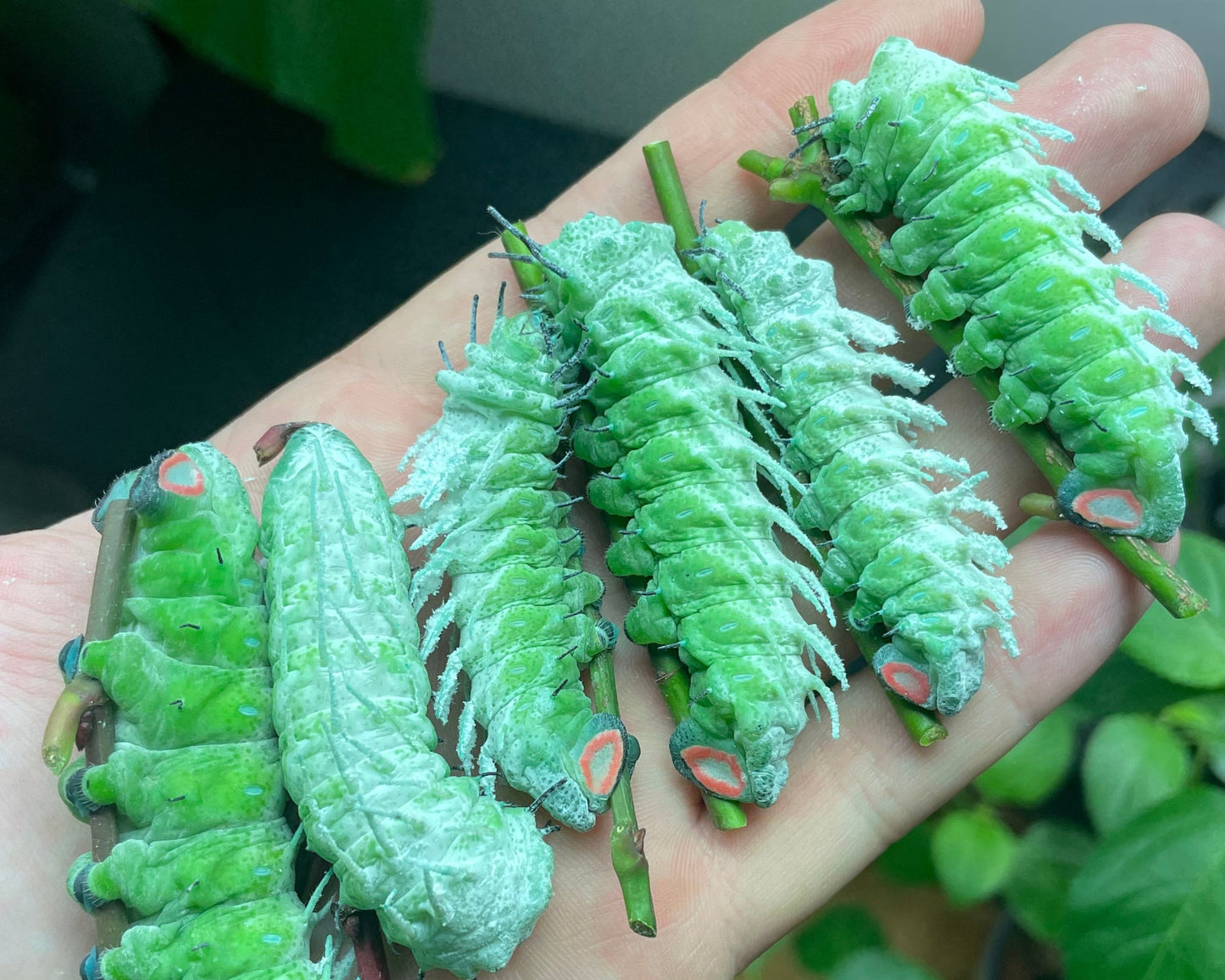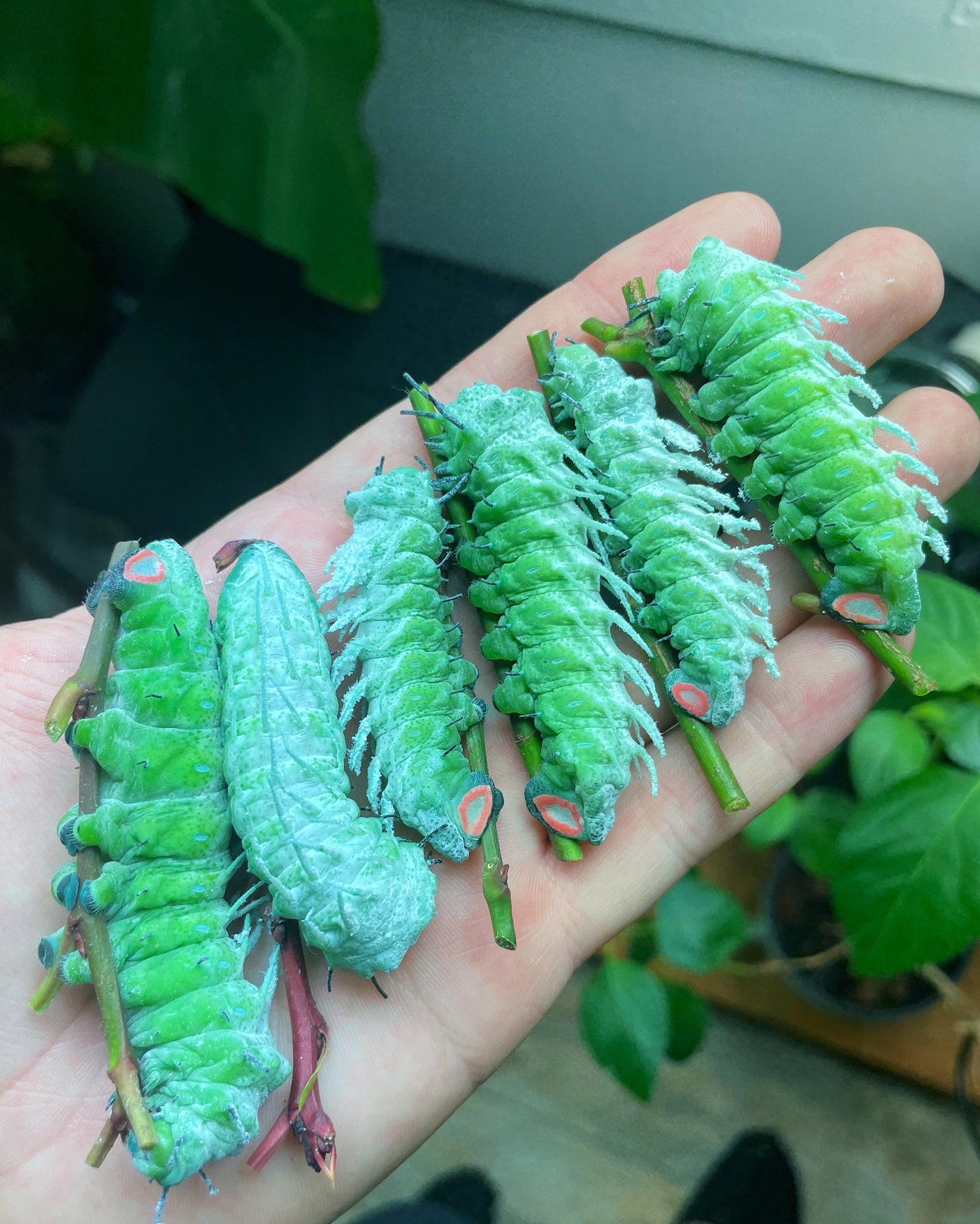Bugs & Butterflies UK
Giant Atlas Moth EGGS (Attacus atlas)
Giant Atlas Moth EGGS (Attacus atlas)
Couldn't load pickup availability
We have some overwintering breeding stock which will produce eggs either in winter or spring.
Giant Atlas Moths are one of our all-time favourite species. We breed them every season, producing two or three broods, and replenishing our breeding stock with imports from Thailand a few times a year. Adult moths are unfailingly impressive with a wingspan of up to 30cm and bright red-orange base colouration, also possessing colourful wing tips which resemble the head of a snake, an adaptive mechanism to deter possible predators. Breeding takes place easily, pairings occur at night and the moths typically remain coupled until the next night when the female begins to lay around 200-250 eggs.
Eggs require no special care and hatch within two weeks. Young larvae need access to fresh foliage - Privet or Portuguese Laurel would be best at this time of year as both are evergreen - and will begin feeding a few hours after hatching, though it is normal for them to wander at this point before they settle down. They may also benefit from a very fine misting with a spray bottle to provide hydration. Rear the caterpillars in plastic containers until they reach L3, then move them onto host plant stems stood in water in a mesh enclosure as they require air circulation and airy conditions - whilst they come from tropical parts of the world, the actual regions atlas inhabits tend to be elevated, therefore they are most comfortable in moderate, humid environments, e.g. a warm room (20 degrees+) and daily or twice-daily misting.
Development is relatively fast, however as atlas grows to a large size comparable to other species its overall development time can be up to 6 or 7 weeks in the larval stage. Not only this, but they actually have 6 instars instead of the usual 5, which allows them to gain the size and energy resources needed to reach adulthood. Cocoons are made of a thick, robust silk among the host plant leaves or the sides of their enclosure - the material of the cocoon protects the pupa inside for weeks or months until the moth is ready to emerge, at which point it escapes through a softer channel at the top of the cocoon and inflates its wings until they are fully formed, solidified and ready for flight - beginning the process over again!
Difficulty: Cocoons are easy to hatch (1/10); caterpillars are not difficult but require clean, airy conditions (3/10)
Host plants: Privet; Lilac; Willow; Cherry; Laurels; Citrus; various others
Conditions: High humidity is essential for cocoons.
Lifecycle: Two or three broods annually; cocoons diapause over winter.
Share

























































































